The Night Butterfly plant, also known as the Purple Butterfly plant, is a captivating species with deep purple foliage that resembles delicate butterfly wings. This plant is often used to beautify balconies and indoor spaces…
1. What is the Night Butterfly Plant?
Origin and Significance of the Night Butterfly Plant
The Night Butterfly plant, scientifically known as Christia species, has the English names of Mariposa and Red Butterfly Wing. Native to Brazil, this plant is cultivated worldwide, including in Vietnam. Its local name in Vietnamese is chua me đất lá tím, which translates to “purple tamarind-like plant.”
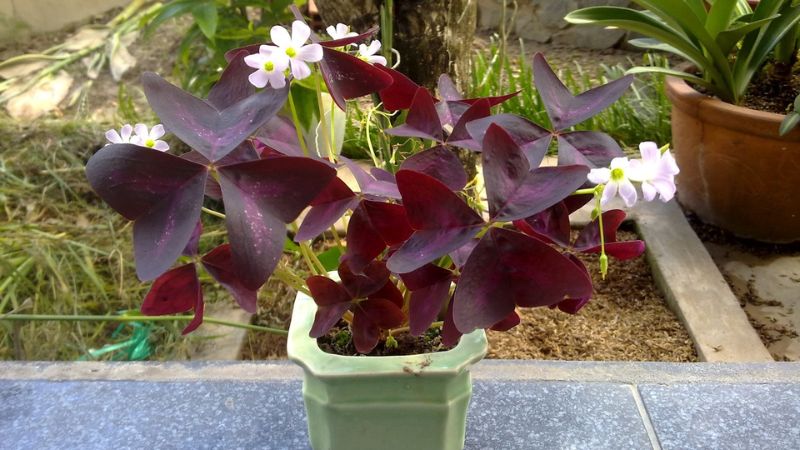 Origin and Significance of the Night Butterfly Plant
Origin and Significance of the Night Butterfly Plant
The Night Butterfly plant exudes fragility with its gentle purple hues, symbolizing enduring love and happiness. It is commonly grown as an ornamental plant on balconies or displayed on work desks and tables in living rooms or bedrooms.
Feng Shui Significance of the Night Butterfly Plant
The deep purple color of the Night Butterfly plant represents fidelity, mystery, passion, and desire in life. Its allure is delicate and subtle, making it a symbol of love and marital bliss. Couples often exchange this plant as a token of their wish for a lasting and faithful relationship.
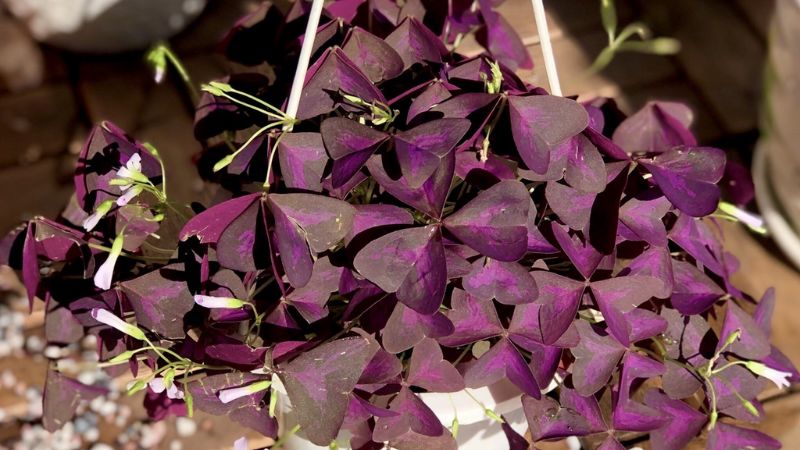 Feng Shui Significance of the Night Butterfly Plant
Feng Shui Significance of the Night Butterfly Plant
Given its compact size, the Night Butterfly plant is ideal for placement on desks or hanging on balconies. It is particularly suited for individuals with Fire and Metal elemental signs, bringing success and career prosperity.
Characteristics and Classification of the Night Butterfly Plant
The Night Butterfly plant has a unique growth habit, with its bulbous base close to the ground, from which multiple slender branches emerge. It typically grows to a height of 20-30 cm, with thin branches and tiny white flowers tinged with purple that bloom in clusters, enhancing its ethereal beauty.
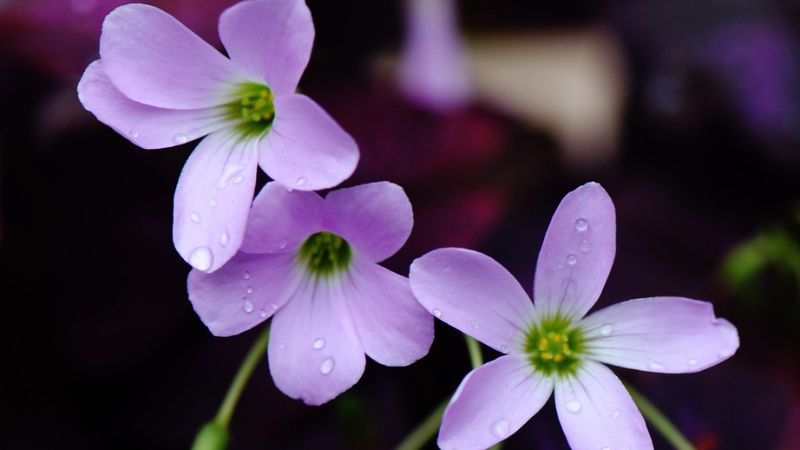 Characteristics and Classification of the Night Butterfly Plant
Characteristics and Classification of the Night Butterfly Plant
The plant’s leaves are sparse, with only one leaf per branch. These leaves are a striking deep purple, resembling three-leaf clovers, each resembling a butterfly’s wing. This distinctive feature, along with the leaves’ nocturnal habit of opening during the day and closing at night, inspired its common name. It’s as if the plant comes alive with fluttering butterflies when the sun sets.
2. Benefits of the Night Butterfly Plant
 Benefits of the Night Butterfly Plant
Benefits of the Night Butterfly Plant
The Night Butterfly plant captivates with its wild and fragile beauty. It is commonly used to decorate homes, adorning balconies, porches, and entryways. Additionally, it makes a thoughtful gift for loved ones, friends, and significant others on special occasions.
3. How to Grow and Care for the Night Butterfly Plant
Growing the Night Butterfly Plant at Home
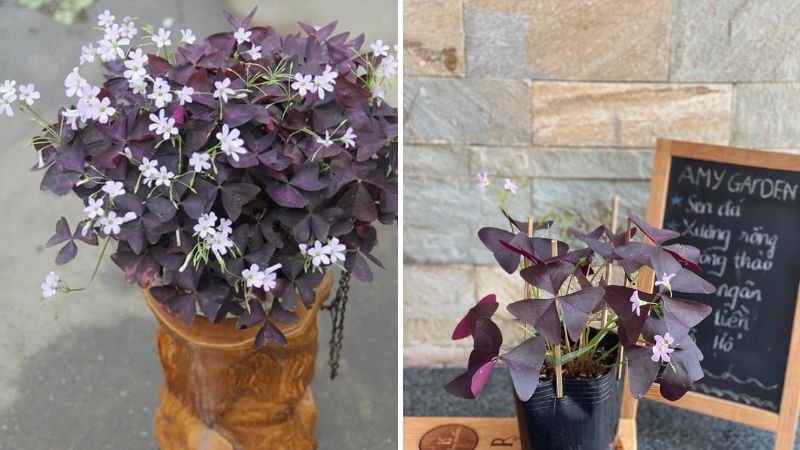 Growing the Night Butterfly Plant at Home
Growing the Night Butterfly Plant at Home
While the Night Butterfly plant can adapt to various soil types, it thrives best in nutrient-rich, humus-filled soil with excellent water retention. Propagation is typically done through bulb division, and here’s a simple guide to get you started:
Caring for the Night Butterfly Plant
To ensure the healthy growth of your Night Butterfly plant, consider the following care tips:
-
Watering: Water your plant 2-3 times a week, preferably in the early morning. Use a handheld sprayer to gently mist the plant with 40-60ml of water each time, avoiding direct pouring, which can damage the delicate foliage and stems.
-
Temperature: This plant thrives in shaded or partially shaded conditions, with temperatures ranging from 18-27°C (64-80°F).
-
Light: If kept indoors, provide indirect sunlight for about an hour, twice a week, to promote photosynthesis. Avoid excessive direct sunlight, as it can cause leaf scorch.
 Caring for the Night Butterfly Plant
Caring for the Night Butterfly Plant
Notes on Growing and Caring for the Night Butterfly Plant
 Notes on Growing and Caring for the Night Butterfly Plant
Notes on Growing and Caring for the Night Butterfly Plant
During the growth period, keep an eye out for pests, especially snails and slugs, which can damage the leaves. Remove them promptly to protect your plant. Additionally, due to its delicate nature, avoid exposing the plant to intense direct sunlight, as it can cause leaf burn. Morning sun is ideal, and limit its exposure to harsh afternoon sun.
4. 10 Beautiful Images of the Night Butterfly Plant
 Deep Purple Night Butterfly Plant
Deep Purple Night Butterfly Plant
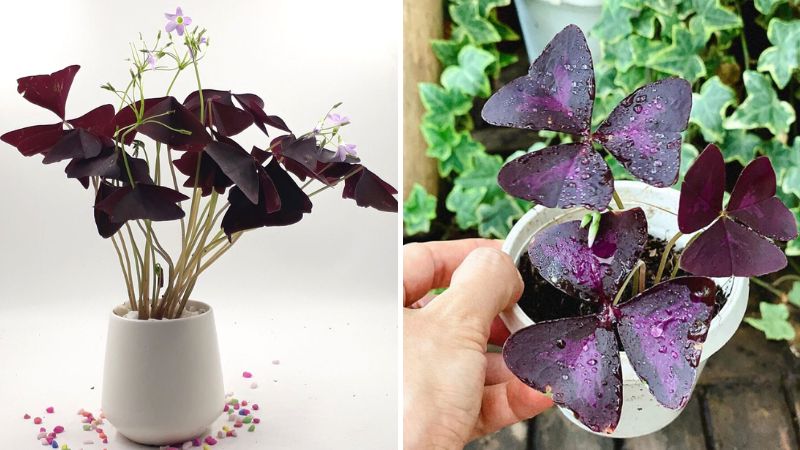 Night Butterfly Plant in a White Pot
Night Butterfly Plant in a White Pot
 Night Butterfly Plant in a Small Tabletop Pot
Night Butterfly Plant in a Small Tabletop Pot
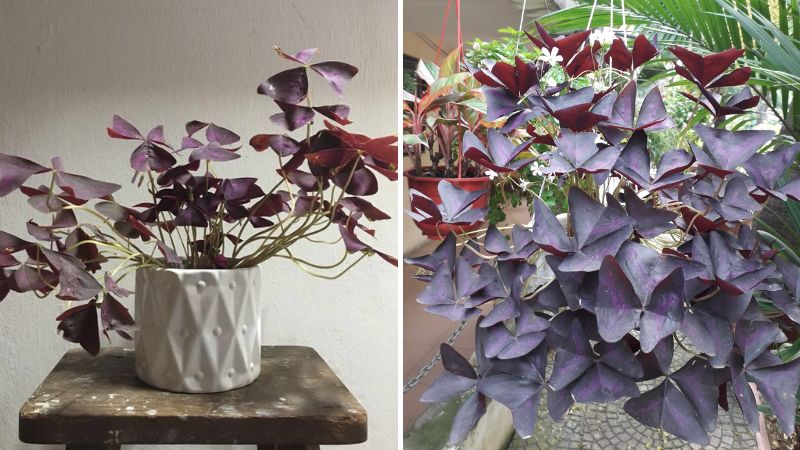 Night Butterfly Plant with Spreading Branches
Night Butterfly Plant with Spreading Branches
 Night Butterfly Plant in Bloom
Night Butterfly Plant in Bloom
We hope you enjoyed learning about the Night Butterfly plant and its significance. Stay tuned for more informative articles on our website!






























